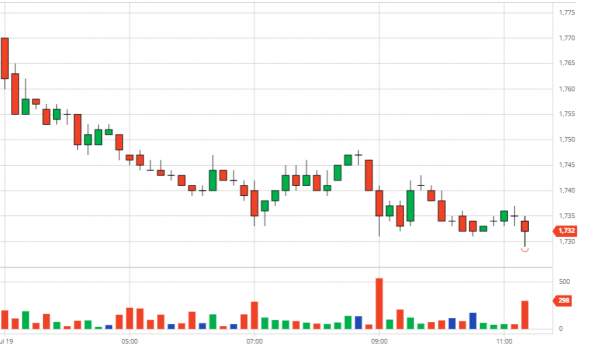However, the market is still carefully watching Brazil weather reports late today.

Robusta chart London September 2021 session on 19/07/2021
At the end of the first session of the week, the price of Robusta coffee on ICE Europe – London reversed to decline. The September spot term fell $35 to $1,732/ton and the November delivery term fell $23 to $1,733/ton, significant reductions. Trading volume on average. The island price structure closes the gap.
Similarly, the price of Arabica coffee on the ICE US floor – New York has a downward trend. September spot futures fell 4.95 cents to 156.40 cents/lb and December futures fell 4.75 cents to 159.35 cents/lb, very sharp declines. Trading volume remained very high above average.
The price of green coffee beans in the Central Highlands provinces decreased by 500-600 VND, to range from 35,600 to 36,200 VND/kg.
The price of exported 2.5% black Robusta coffee stood at $1,733 per ton, FOB – HCM, according to November futures prices in London.
The reais plummeted 2.61%, the exchange rate fell to 1 USD = 5,2500 reais due to the global market’s fears of a new variant of covid-19, with the possibility that the Fed will change monetary policy when inflation exceeds target level, pushed USDX higher and US stocks plummeted.
The weather forecast for the first day of the week shows a very low chance of causing frost in Brazil, almost only possible. “black frost” In some of the newly planted coffee areas of Paraná, the state has an output of about 800,000 bags and the harvest is nearing completion.
The price of coffee on the two world futures exchanges turned to decline, which is not surprising when the world coffee markets are in the middle of a recession. “weather business”.
However, the market is still carefully watching Brazilian weather reports late on 20/07, when the cold air mass extends to the coffee growing regions of São Paulo and Minas Gerais states.
English (giacaphe.com)
